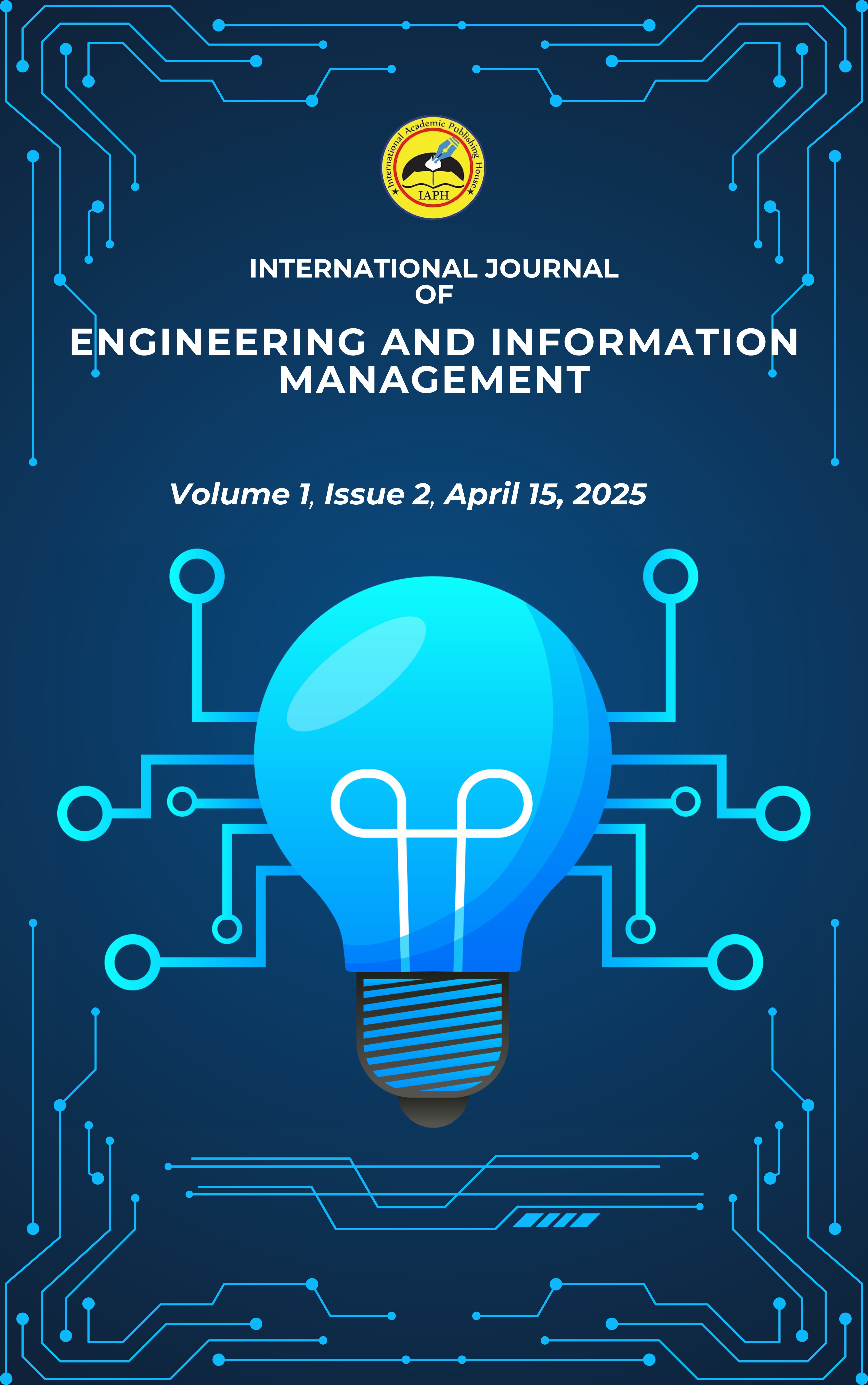Study of Process Parameters of Ultrasonic Machining on Borosilicate Glass
DOI:
https://doi.org/10.52756/ijeim.2025.v01.i02.003Keywords:
Abrasive slurry concentration, MRR overcut, Power rating, Tool feed rate, Ultrasonic machiningAbstract
The relentless evolution of advanced manufacturing technologies demands the precise machining of high-strength, temperature-resistant (HSTR) materials including borosilicate glass, which are pivotal in aerospace, nuclear, and automotive industries. Modern materials like high-strength metals and ceramics developed to meet advanced industries’ needs are typically strong, hard, and
brittle. These materials may not be suitable for traditional machining methods due to the chipping or fracturing of the surface layer or even the whole component, resulting in poor product quality. Ultrasonic machining is one of the most widely used non-traditional machining processes for machining non-conductive, brittle materials. Unlike other processes, ultrasonic machining does not damage the work surface thermally, contributing to the successful performance of these materials in service. The ultrasonic machining process
has successfully made holes in borosilicate glass. Power rating and tool feed rate are the most important parameters that have more influence on MRR and overcutting.
Downloads
References
Asami, T. & Miura, H. (2015). Study of ultrasonic machining by longitudinal-torsional vibration for processing brittle materials-observation of machining marks. Physics Procedia, 70, 118–121. https://doi.org/10.1016/j.phpro.2015.08.056.
Batish, A., Dhuria, G. K., & Singh, R. (2011). Ultrasonic machining of titanium and its alloys: a state of art review and future prospective. International Journal of Machining and Machinability of Materials, 10(4), 326. https://doi.org/10.1504/ijmmm.2011.043088.
Feucht, F., Ketelaer, J., Wolff, A., Mori, M., & Fujishima, M. (2014). Latest machining technologies of hardto-cut materials by ultrasonic machine tool. Procedia CIRP, 14, 148–152. https://doi.org/10.1016/j.procir.2014.03.040.
Gorin, A. & Reddy, M. M. (2014). Advanced ceramics: Some challenges and solutions in machining by conventional methods. Applied Mechanics and Materials, 624, 42–47. https://doi.org/10.4028/www.scientific.net/amm.624.42.
Guzzo, P. L., Shinohara, A. H., & Raslan, A. A. (2004). A comparative study on ultrasonic machining of hard and brittle materials. Journal of the Brazilian Society of Mechanical Sciences and Engineering, 26(1). https://doi.org/10.1590/s1678-58782004000100010.
Ho, K., Newman, S., Rahimifard, S., & Allen, R. (2004). State of the art in wire electrical discharge machining (wedm). International Journal of Machine Tools and Manufacture, 44(12–13), 1247–1259. https://doi.org/10.1016/j.ijmachtools.2004.04.017.
Jianxin, D. & Taichiu, L. (2002). Ultrasonic machining of alumina-based ceramic composites. Journal of the European Ceramic Society, 22(8), 1235–1241. https://doi.org/10.1016/s0955-2219(01)00437-x.
Khairy, A. (1990). Assessment of some dynamic parameters for the ultrasonic machining process. Wear, 137(2), 187–198. https://doi.org/10.1016/0043-1648(90)90135-w.
Komaraiah, M. & Reddy, P. N. (1993). A study on the influence of workpiece properties in ultrasonic machining. International Journal of Machine Tools and Manufacture, 33(3), 495–505. https://doi.org/10.1016/0890-6955(93)90055-y.
Lee, T. & Jianxin, D. (2001). Ultrasonic erosion of whisker-reinforced ceramic composites. Ceramics International, 27(7), 755–760. https://doi.org/10.1016/s0272-8842(01)00026-8.
Lima, M. & Monteiro, R. (2001). Characterisation and thermal behaviour of a borosilicate glass. Thermochimica Acta, 373(1), 69–74. https://doi.org/10.1016/s0040-6031(01)00456-7.
Majeed, M. A., Vijayaraghavan, L., Malhotra, S., & Krishnamurthy, R. (2007). Ultrasonic machining of al2o3/lapo4 composites. International Journal of Machine Tools and Manufacture, 48(1), 40–46. https://doi.org/10.1016/j.ijmachtools.2007.07.012.
Pawar, P., Ballav, R., & Kumar, A. (2015). An overview of machining process of alumina and alumina ceramic composites. Manufacturing Science and Technology, 3(1), 10–15. https://doi.org/10.13189/mst.2015.030102.
Rakshit, R. & Das, A. K. (2019). A review on cutting of industrial ceramic materials. Precision Engineering, 59, 90–109. https://doi.org/10.1016/j.precisioneng.2019.05.009.
Sabyrov, N., Jahan, M. P., Bilal, A., & Perveen, A. (2019). Ultrasonic vibration assisted electro-discharge machining (edm)—an overview. Materials, 12(3), 522. https://doi.org/10.3390/ma12030522.
Thoe, T., Aspinwall, D., & Wise, M. (1998). Review on ultrasonic machining. International Journal of Machine Tools and Manufacture, 38(4), 239–255. https://doi.org/10.1016/s0890-6955(97)00036-9.
Wiercigroch, M., Wojewoda, J., & Krivtsov, A. (2004). Dynamics of ultrasonic percussive drilling of hard rocks. Journal of Sound and Vibration, 280(3–5), 739–757. https://doi.org/10.1016/j.jsv.2003.12.045.
Zhang, C., Guo, P., Ehmann, K. F., & Li, Y. (2015). Turning of microgrooves both with and without aid of ultrasonic elliptical vibration. Materials and Manufacturing Processes, 30(8), 1001–1009. https://doi.org/10.1080/10426914.2015.1004692.
Downloads
Published
Issue
Section
License
Copyright (c) 2025 International Academic Publishing House (IAPH)

This work is licensed under a Creative Commons Attribution-NonCommercial-NoDerivatives 4.0 International License.




